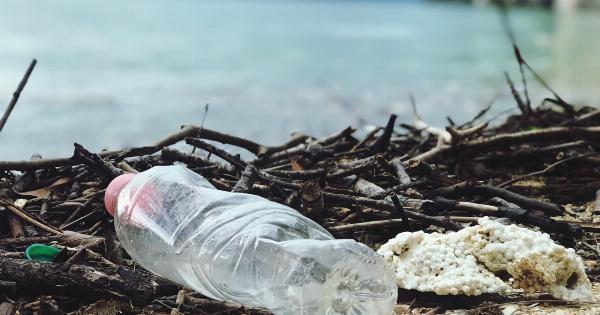In recent years, the issue of plastic pollution has gained significant attention worldwide. Plastic waste has become a major environmental problem, with devastating consequences for marine life and ecosystems.
However, the impact of plastic pollution goes beyond its obvious visual presence in our oceans. It is now becoming increasingly evident that plastic is also entering our bodies through seafood consumption.
The scale of plastic pollution in our oceans
The scale of plastic pollution in our oceans is alarming. According to a report by the United Nations, over eight million tons of plastic waste enter the oceans every year.
This waste takes hundreds of years to decompose, and as a result, the amount of plastic in the oceans is growing rapidly. It is estimated that there will be more plastic than fish in the ocean by 2050 if immediate action is not taken to address this issue.
The impact of plastic on marine life
Marine animals often mistake plastics for food, leading to fatal consequences. Turtles, for example, frequently ingest plastic bags, which they mistake for jellyfish. This can lead to intestinal blockages and ultimately death.
Similarly, seabirds often consume small plastic fragments, known as microplastics, which can cause internal injuries and impair their ability to feed properly.
Additionally, plastic waste creates entanglement hazards for marine animals such as seals, dolphins, and whales. They can become trapped in discarded fishing nets and other debris, leading to serious injuries or death.
The visual impact of marine animals entangled in plastic waste serves as a grim reminder of the devastating consequences of our plastic consumption.
The pathway of plastic into our bodies
While the impact of plastic pollution on marine life is well-documented, the pathway of plastic entering our bodies through seafood consumption is a more recent concern.
As plastics break down into smaller pieces over time, they can be ingested by plankton and other small organisms at the base of the marine food chain. These organisms are then consumed by larger fish, accumulating plastic in their digestive tracts.
Microplastics, which are tiny particles of plastic less than five millimeters in size, have been found in various seafood products such as fish, shellfish, and even table salt.
A study conducted by the University of Ghent in Belgium found that people who regularly eat seafood could be consuming up to 11,000 tiny plastic fragments each year.
The potential health risks of consuming plastic-contaminated seafood
The long-term health effects of consuming plastic-contaminated seafood are still not fully understood. However, several studies have raised concerns about the potential risks.
Microplastics have been found to contain harmful chemicals such as bisphenol A (BPA) and phthalates, which are known endocrine disruptors.
Endocrine disruptors can interfere with the normal functioning of hormones in our bodies, leading to a range of health problems, including reproductive disorders, developmental issues in children, and an increased risk of certain cancers.
It is therefore concerning that these harmful chemicals could be entering our bodies through the consumption of seafood contaminated with microplastics.
Addressing the issue
Addressing the issue of plastic entering our bodies through seafood consumption requires a multi-faceted approach. Firstly, reducing the amount of plastic waste entering our oceans is crucial.
This can be achieved through better waste management practices, increased recycling efforts, and the development of alternative materials to replace single-use plastics.
Furthermore, more research is needed to better understand the potential health effects of consuming plastic-contaminated seafood.
Governments and regulatory bodies should invest in studies to assess the risks and establish safe limits for plastic contamination in seafood products. This would help to inform consumers and ensure that appropriate measures are taken to protect public health.
Individual actions to reduce plastic pollution
While systemic changes are essential, individuals can also play a significant role in reducing plastic pollution and the potential for plastic to enter our bodies through seafood consumption.
Simple actions like reducing plastic packaging, using reusable bags and containers, and supporting businesses that prioritize sustainable practices can make a difference.
Educating ourselves and raising awareness about the issue of plastic pollution is also important. By understanding the impact of our choices, we can make more informed decisions and actively contribute to a healthier planet.
In conclusion
The presence of plastic in our oceans is a serious environmental problem with wide-ranging consequences. The fact that plastic is entering our bodies through seafood consumption highlights the urgency of addressing this issue.
By taking collective action, implementing systemic changes, and making informed choices as individuals, we can work towards a future where plastic pollution is no longer a threat to our oceans, marine life, and our own well-being.






























